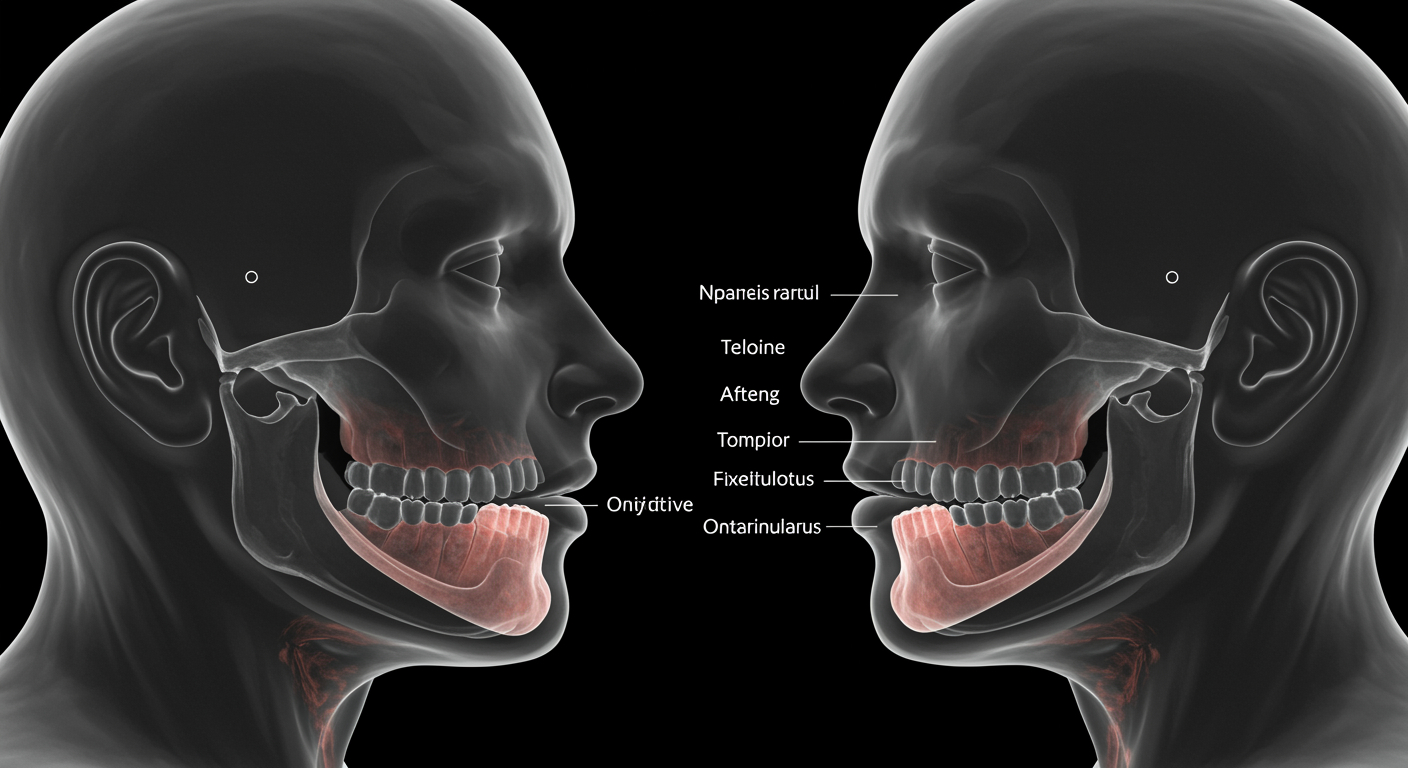Jaw Surgery Overview
Jaw surgery (orthognathic surgery) corrects jaw and facial irregularities, improving functionality and aesthetics. It addresses issues like misalignment, overbites, underbites, and sleep apnea. Types include upper jaw (maxillary), lower jaw (mandibular), double jaw (bimaxillary), and chin surgery (genioplasty). Preparation involves consultations, pre-surgical orthodontics, and health assessments. Recovery includes a soft diet, managing swelling, and gradual healing over months. Benefits include better chewing, speaking, breathing, and facial symmetry, while risks include infection, numbness, and extended recovery time. Consult an oral surgeon to determine if it’s right for you.
Table of Contents
Jaw surgery, or orthognathic surgery, is a procedure that corrects a range of facial and jaw irregularities. By enhancing functionality and aesthetics, it can transform lives, improving both health and confidence. Whether you’re considering this surgery or simply curious, this comprehensive guide will walk you through its purpose, types, preparation, recovery, and the benefits and risks involved.
What Is Jaw Surgery and Why Is It Done?
Jaw surgery involves surgical intervention on the jawbones to fix structural or alignment issues. It’s often performed by an oral and maxillofacial surgeon in collaboration with orthodontists. While the procedure is usually elective, in some cases, it becomes medically necessary to resolve functional problems.
Purposes of Jaw Surgery:
- Correcting jaw misalignment to alleviate issues with biting, chewing, and speaking.
- Improving facial symmetry, which may also boost confidence.
- Addressing medical conditions like obstructive sleep apnea (caused by jaw structure) or temporomandibular joint (TMJ) disorders.
- Fixing jaw injuries sustained from accidents.
- Accommodating orthodontic treatments, enabling braces to produce optimal results.
Jaw surgery isn’t simply about appearance; it tackles physical issues that can greatly impact quality of life.
Common Reasons for Jaw Surgery
If you’re wondering why people opt for jaw surgery, consider these frequent scenarios:
- Severe overbite or underbite that affects eating or speaking.
- Open bite, where the top and bottom teeth don’t meet even when the mouth is closed.
- Facial asymmetry, such as a receding chin or disproportionate jawline.
- Chronic pain or discomfort in the jaw joint or surrounding muscles.
- Breathing problems, especially during sleep, caused by misaligned jaw structures.
These issues often demand more than orthodontic solutions like braces, making surgery a viable next step.
Types of Jaw Surgery
Different conditions call for different types of jaw surgery. Understanding the variations can help you grasp why your medical team might recommend a specific approach.
1. Upper Jaw Surgery (Maxillary Osteotomy)
This procedure targets the upper jaw (maxilla) to address problems such as:
- A severely receded upper jaw.
- Crossbite, where the upper teeth sit inside the lower teeth.
- Open bite caused by uneven jaw growth.
2. Lower Jaw Surgery (Mandibular Osteotomy)
Here, the focus is on the lower jaw to correct:
- Receding or overly prominent lower jaws.
- An underbite or overbite affecting eating or speech.
3. Double Jaw Surgery (Bimaxillary Osteotomy)
When both the upper and lower jaws require adjustment, double jaw surgery aligns the structures harmoniously. It’s usually recommended for complex cases involving significant misalignment or aesthetic concerns.
4. Chin Surgery (Genioplasty)
Although not part of traditional orthognathic surgery, genioplasty may accompany jaw surgery to adjust the chin’s position, further improving symmetry.
Preparing for Jaw Surgery
Preparation is key to ensuring a smooth surgical process and recovery. Here’s what you should expect leading up to the procedure:
1. Consultations and Evaluation
Your oral surgeon will:
- Conduct X-rays, photographs, and 3D scans to assess your jaw’s structure.
- Collaborate with your orthodontist to create a treatment plan, which may include pre-surgical braces.
- Discuss goals, expected results, and potential risks.
2. Pre-Surgical Treatments
Many patients need orthodontic treatment before surgery to align teeth properly. This typically takes 12 to 18 months.
3. Health Assessments
Medical evaluations determine whether you’re healthy enough for surgery. Lab tests and overall fitness checkups are standard.
4. Preparing Mentally and Logistically
- Plan for time off work, school, or other responsibilities.
- Arrange for help during the initial recovery phase.
What to Expect During Recovery
The post-surgery recovery process requires patience but is manageable with the right approach. Here’s what you need to know:
1. The Immediate Post-Surgery Period
- You’ll likely spend a night or two in the hospital for monitoring.
- Pain and swelling are normal but manageable with prescribed medications.
2. Diet and Activity Restrictions
- A soft or liquid diet is necessary for the first few weeks to avoid straining the jaw.
- Strenuous activities should be avoided during initial healing.
3. Gradual Healing
- Expect swelling to last for several weeks, with complete healing taking several months.
- Follow-up visits will ensure your jaw is healing correctly.
4. Tips for Managing Recovery
- Elevate your head while sleeping to reduce swelling.
- Stay hydrated and follow your doctor’s diet recommendations.
- Use ice packs during the first 48 hours for discomfort.
- Maintain proper oral hygiene, including rinsing with any recommended solutions.
Benefits and Risks of Jaw Surgery
Like any surgical procedure, jaw surgery comes with its own set of pros and cons. A balanced understanding helps you make informed decisions.
Potential Benefits:
- Functional improvements like easier chewing, speaking, and breathing.
- Enhanced facial balance, leading to a confidence boost.
- Relief from chronic pain caused by TMJ issues or misalignment.
- Better sleep quality for patients with sleep apnea.
Potential Risks:
- Risk of infection, bleeding, or nerve damage, although rare.
- Temporary effects like numbness around the chin, lips, or jaw.
- Extended recovery time, typically measured in months for complete results.
That said, the vast majority of patients report a high degree of satisfaction post-recovery, citing major lifestyle and health improvements.
Final Thoughts
Jaw surgery is a significant but life-changing procedure for addressing aesthetic and functional issues. Whether you’re correcting an underbite, resolving sleep apnea, or simply realigning your jaw for optimal function, the results can improve your quality of life in countless ways.
If you’re considering this step, consult a trusted oral surgeon who can guide you through the process and help you decide whether jaw surgery is the right choice for you. With the right preparation and care, you’ll be well on your way to a healthier, more confident you.





